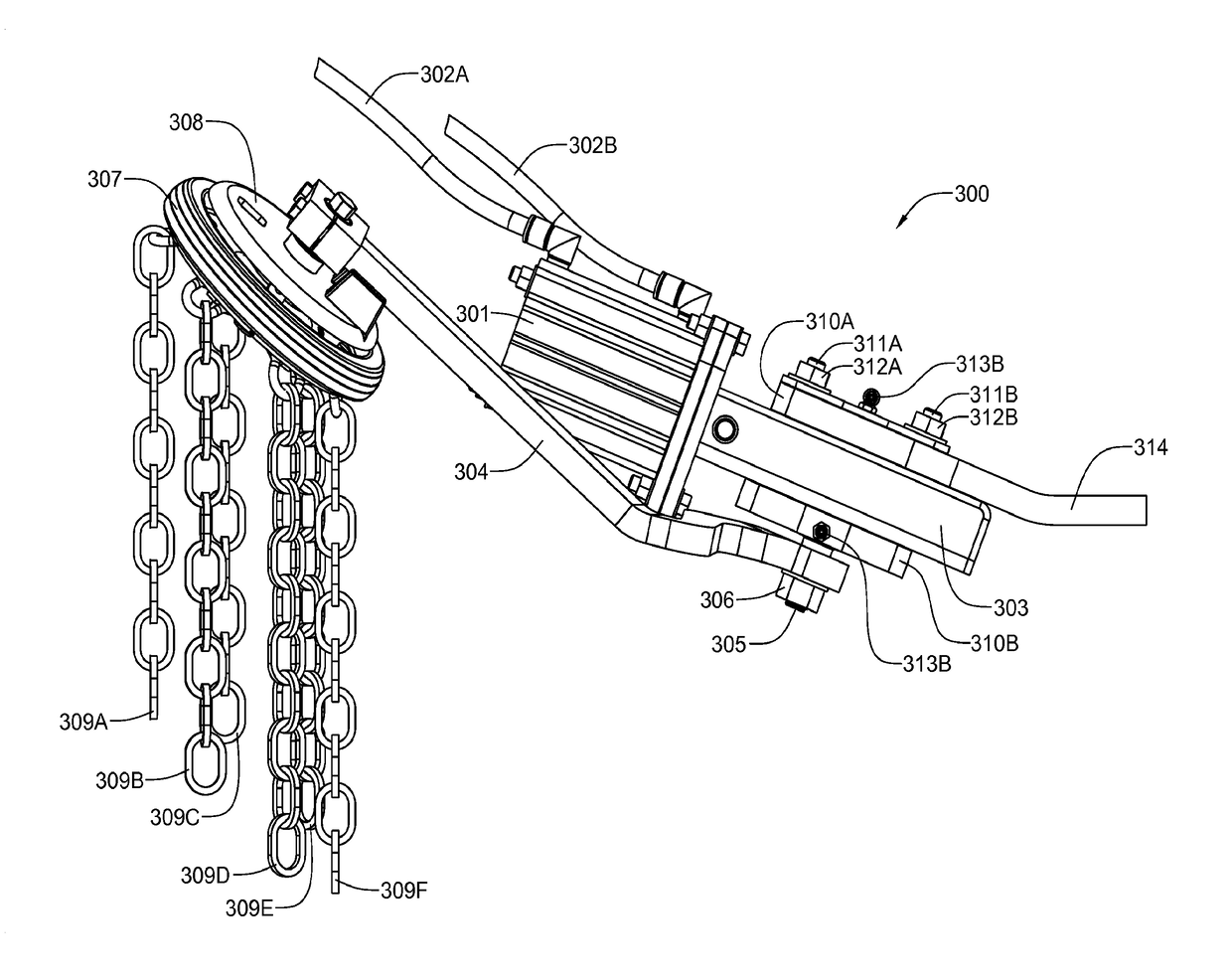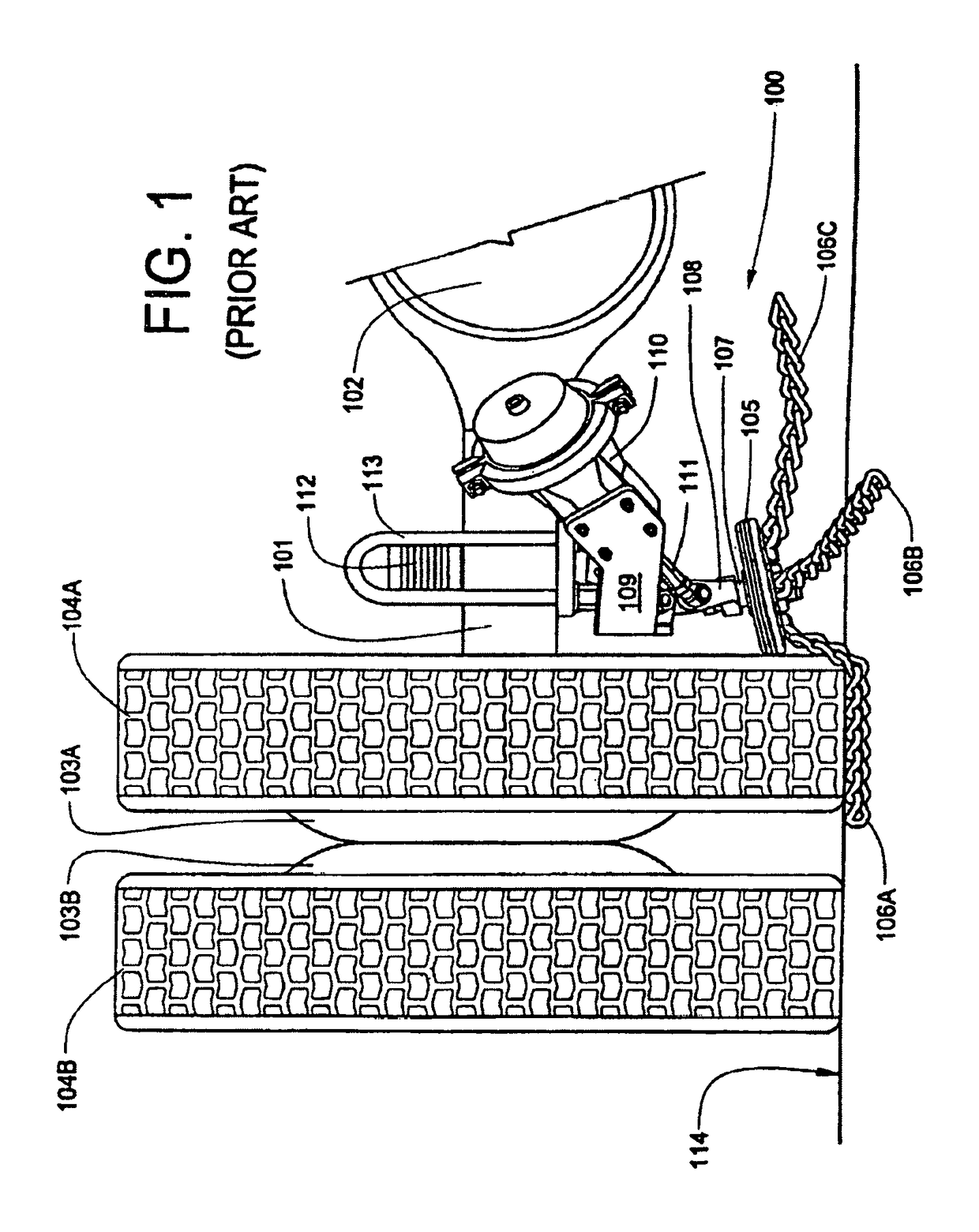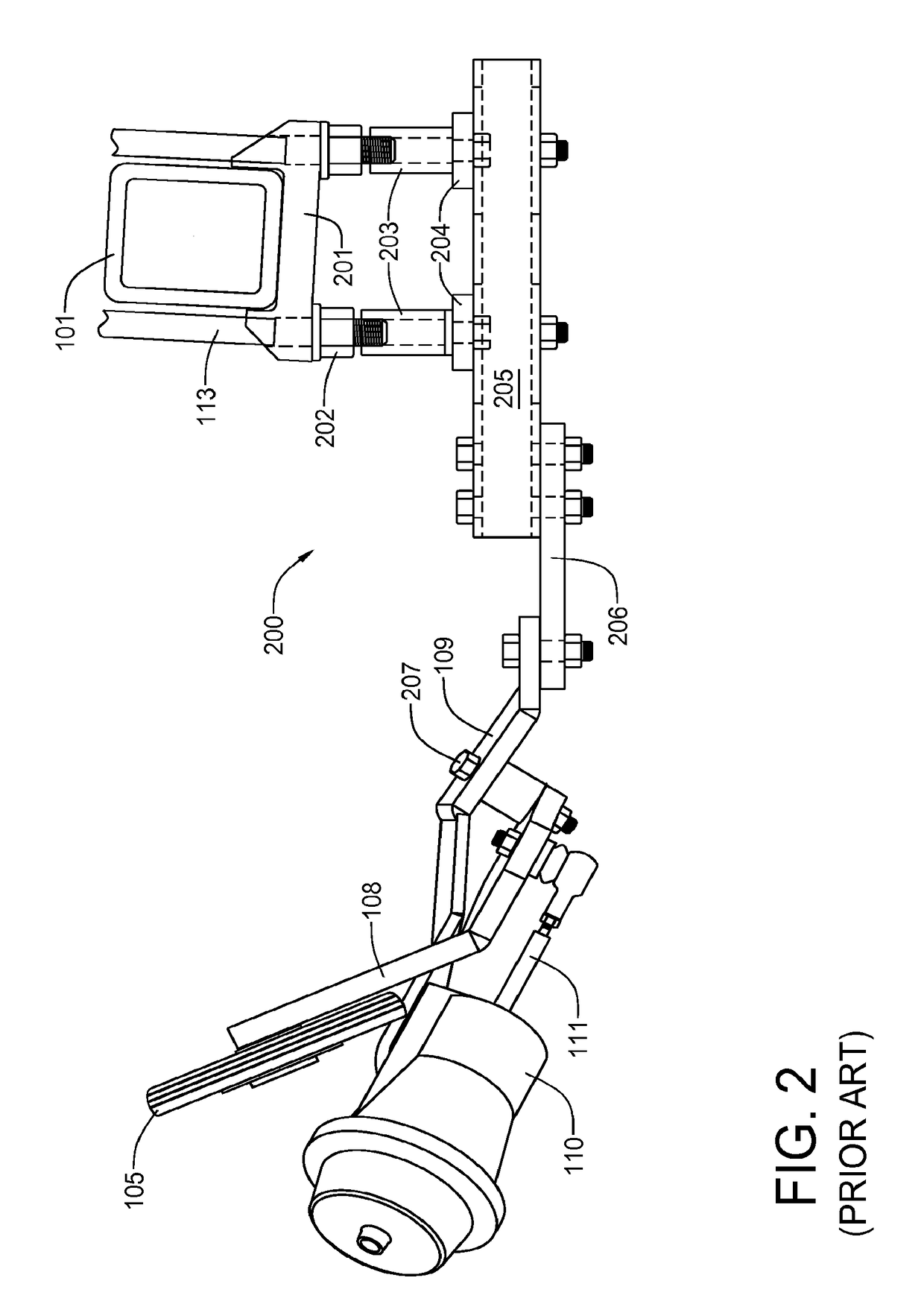Pneumatically-operated rigid linear chain and sprocket actuator for deploying a vehicle snow chain traction system
a linear chain and pneumatic operation technology, applied in the direction of wheels, vehicle components, non-skid devices, etc., can solve the problems of system being too bulky for certain applications, arc of rotation of the support member 108, and limited to less than about 150 degrees, so as to minimize friction between the idler bar and the rack, the effect of rapid retraction and rapid deploymen
- Summary
- Abstract
- Description
- Claims
- Application Information
AI Technical Summary
Benefits of technology
Problems solved by technology
Method used
Image
Examples
Embodiment Construction
[0037]The pneumatically-operated rigid linear chain and sprocket actuator for rapidly deploying and retracting a vehicle snow chain traction system will now be described in detail with reference to the attached drawing figures.
[0038]Referring now to FIG. 3, the new vehicle snow chain traction system 300 includes a pneumatic cylinder assembly 301 having a cylindrical chamber enclosing a piston (internal components of the pneumatic cylinder assembly are not shown in this view) that is pneumatically-movable bidirectionally by means of compressed air delivered by compressed air lines 302A and 302B. The pneumatic cylinder assembly 301 is bolted to a rigid linear chain and sprocket actuator unit 303. An actuator shaft 304, on which the internal sprocket (now shown in this view) is secured, protrudes through one side of the actuator unit 303. A deployment arm 304 is rigidly secured to the protruding end of the actuator shaft 305 with a lock nut 306. For a preferred embodiment of the invent...
PUM
 Login to View More
Login to View More Abstract
Description
Claims
Application Information
 Login to View More
Login to View More - R&D
- Intellectual Property
- Life Sciences
- Materials
- Tech Scout
- Unparalleled Data Quality
- Higher Quality Content
- 60% Fewer Hallucinations
Browse by: Latest US Patents, China's latest patents, Technical Efficacy Thesaurus, Application Domain, Technology Topic, Popular Technical Reports.
© 2025 PatSnap. All rights reserved.Legal|Privacy policy|Modern Slavery Act Transparency Statement|Sitemap|About US| Contact US: help@patsnap.com



